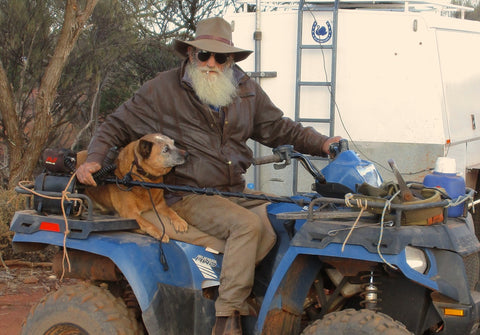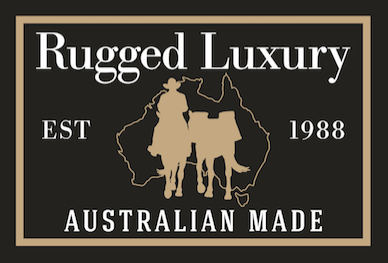While the majority of Australians enjoy the comforts of life in built up areas those in their quest for gold lead an entirely different life.

The bitumen roads, fast foods, internet, restaurants, electricity for lighting and hot water and huge food stores are envied by those in bush camps a thousand kilometers or more away from the bright lights.

The weather extremes are accepted, freezing cold winters and blistering heat in the summer are dealt with by fire or a twelve volt fan, life under canvas certainly has its moments.

Recently I joined some mates dry blowing for fine gold south east of Wiluna in the desert country of WA.

Our neighbors, camels, dingoes and roos make their way down steep slopes of an old mine site to water each evening as any surface water dried up months ago and station bores and wells fell into disrepair many years before as people walked off their land no longer able to make a living in such an arid environment.

Since gold was first discovered in Australia it has lured many people far into the outback to strike it rich, unfortunately few returned with gold and many of those who did soon spent their hard earned on grog, girls and high living.

Today the big companies dig massive open cut mines to retrieve up to 3 gms/ tonne and rely on 24 hour work schedules 365 days a year to make the big bucks.

The scale of mining then drops considerable to operators who do quite well with medium sized machinery and plant to extract gold from dirt with wet plants, dry-blowers or sluces. The water operated plants are limited due to the lack of water available in most of the WA goldfields and the mining methods above have high overheads which puts enormous pressure on the operator to win gold to stay in business.

The next level in mining is what’s called pushing, operators use loaders to push off 30 cm of dirt from selected ground which has proved to be alluvial and then use detectors to find the gold exposed at the new lower level. The depth can then be lowered again and again until the gold runs out then the area is rehabbed.

Finally, the lowest level and cheapest method by far is the prospector who selects areas to hunt for gold using a metal detector. At the end of his day walking about the bush he may have found 1 gram of gold and at today's price that is about $50. If he was lucky enough to find an ounce then his pay for the day is over $1700, not bad if luck is going your way and the only overheads are living expenses.

Where one can actually legally search for gold is controlled by leases which are owned by companies or individuals and managed by the Mines Department to whom rent is paid on an annual basis or for the term of the lease. Some ground is what they call a pending lease, that’s is ground that has not been taken up by anyone and is available for prospectors to enter and search for gold. Permission to enter active mining leases can be gained by approaching the lease holders and getting written permission to be on their land for specified times or by securing what they call a 40E which allows you to be on certain ground once successfully applied for.

There a lots of complicated rules re the above and a steep learning curve for the newcomer prospector however, detailed information is available from the Mines Department.

Probably the hardest part of the exercise once the prospector has decided on a pending lease to work is finding it. The lease may have irregular boundaries and up to eight co-ordinates to find in a sea of mulga covering thousands of square kilometers and over a thousand k’s from the bright lights of home.

These points can be found using a GPS which also becomes very handy finding you way back to camp and those without them soon make the national news as missing prospectors some of whom have never been found.

It’s been a happy camp out here in the mulga, the dry blowing has been successful and likewise my prospecting.

Until next time.
Steve and Sass.
